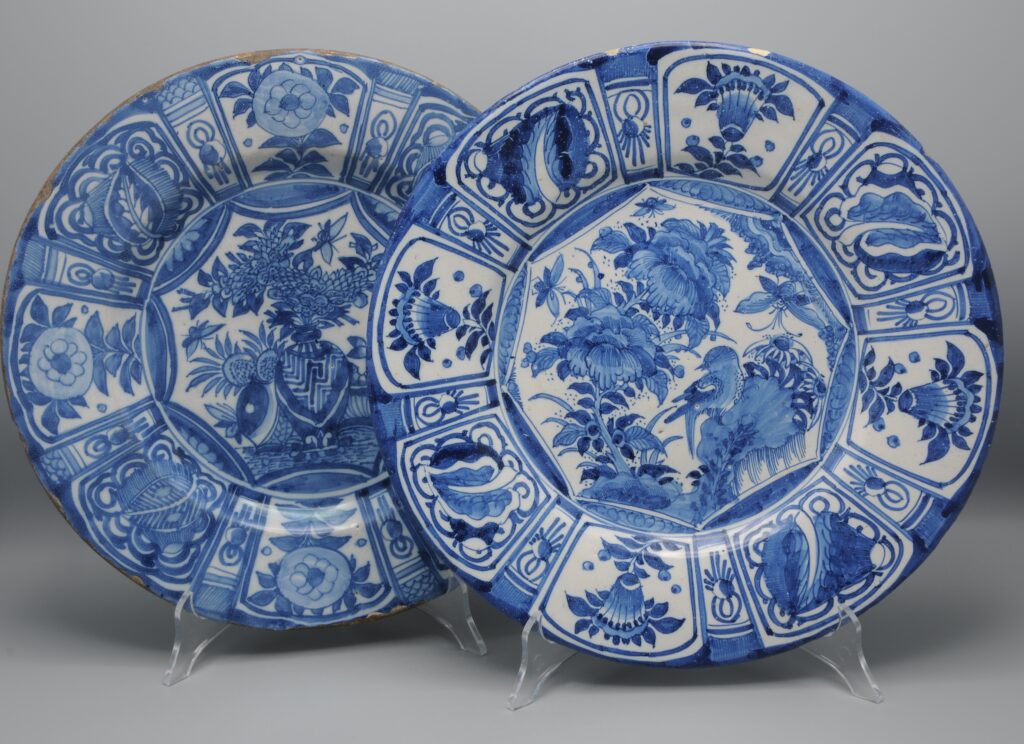The History of Delftware: From Maiolica to Dutch Mastery
When people think of Delftware, or Delft blue, they often picture blue and white plates decorated with windmills or floral borders. Yet the history of Delft pottery begins long before the city became famous. It is a story of artistic exchange, technical innovation, and global trade that connects the Middle East, the Mediterranean, and the Dutch Republic.
The Origins of Tin-Glazed Earthenware
The beginnings of Delftware lie in the tradition of tin-glazed earthenware that developed in the Islamic world and spread through Spain and Italy during the Middle Ages. This glaze, made from lead rendered opaque with tin oxide, created a smooth white surface ideal for painted decoration. In Italy, the technique evolved into maiolica, the vividly coloured pottery that flourished during the Renaissance. From there, the craft moved northward. By the sixteenth century, Antwerp potters were producing similar wares that blended northern materials with southern techniques, laying the foundation for what would later emerge in Delft.
From Antwerp to Delft
When Antwerp fell to Spanish forces in 1585, many Protestant craftsmen fled to the northern provinces. Among them were experienced potters who brought their knowledge of tin-glazing and kiln building. They settled in cities such as Haarlem, Utrecht, and Delft, where they established new workshops that would transform Dutch ceramics. Delft’s position, close to trade routes and raw materials, made it the perfect place for the industry to grow.
The Influence of Chinese Porcelain
At the same time, ships of the Dutch East India Company were bringing vast quantities of Chinese porcelain to Europe. These delicate, translucent wares, painted in brilliant cobalt blue, became coveted luxury items. European potters, unable to reproduce true porcelain, began to imitate its appearance using tin-glazed earthenware. The resulting Delftware had a similar beauty at a fraction of the cost, and it quickly found eager buyers.
A Turning Point: The Seventeenth Century
The mid-seventeenth century brought another turning point. Civil war in China disrupted porcelain production, and exports to Europe declined sharply. Dutch merchants looked for alternatives, and Delft’s potters seized the opportunity. They produced large quantities of blue and white earthenware inspired by Chinese examples but gradually developed their own designs, combining Asian motifs with European landscapes, flowers, and biblical scenes.
The Golden Age of Delft Pottery
By the 1625s, already eight workshops in Delft had begun specializing entirely in this type of pottery. As demand grew, the city became a thriving center of ceramic production. By around 1700, more than thirty plateelbakkerijen were active, together producing millions of pieces each year; plates, vases, and decorative objects of every kind. The industry employed painters, mould-makers, kiln operators, and merchants, establishing Delft as a name synonymous with quality tin-glazed earthenware across Europe.
From Imitation to Innovation
Delftware was exported across Europe, reaching England, France, Germany, and the Southern Netherlands. Dutch traders carried it throughout their maritime networks, and Delft became synonymous with fine painted ceramics. Workshops such as De Grieksche A and Metaale Pot earned international renown for the quality of their decoration and innovation in form.
What began as an imitation of Chinese porcelain and Italian maiolica evolved into a distinct expression of Dutch artistry. Delftware came to embody the creativity and craftsmanship of the Dutch Golden Age. Today, authentic antique Delft ceramics remain admired for their elegance, their artistry, and the centuries of history they represent.
